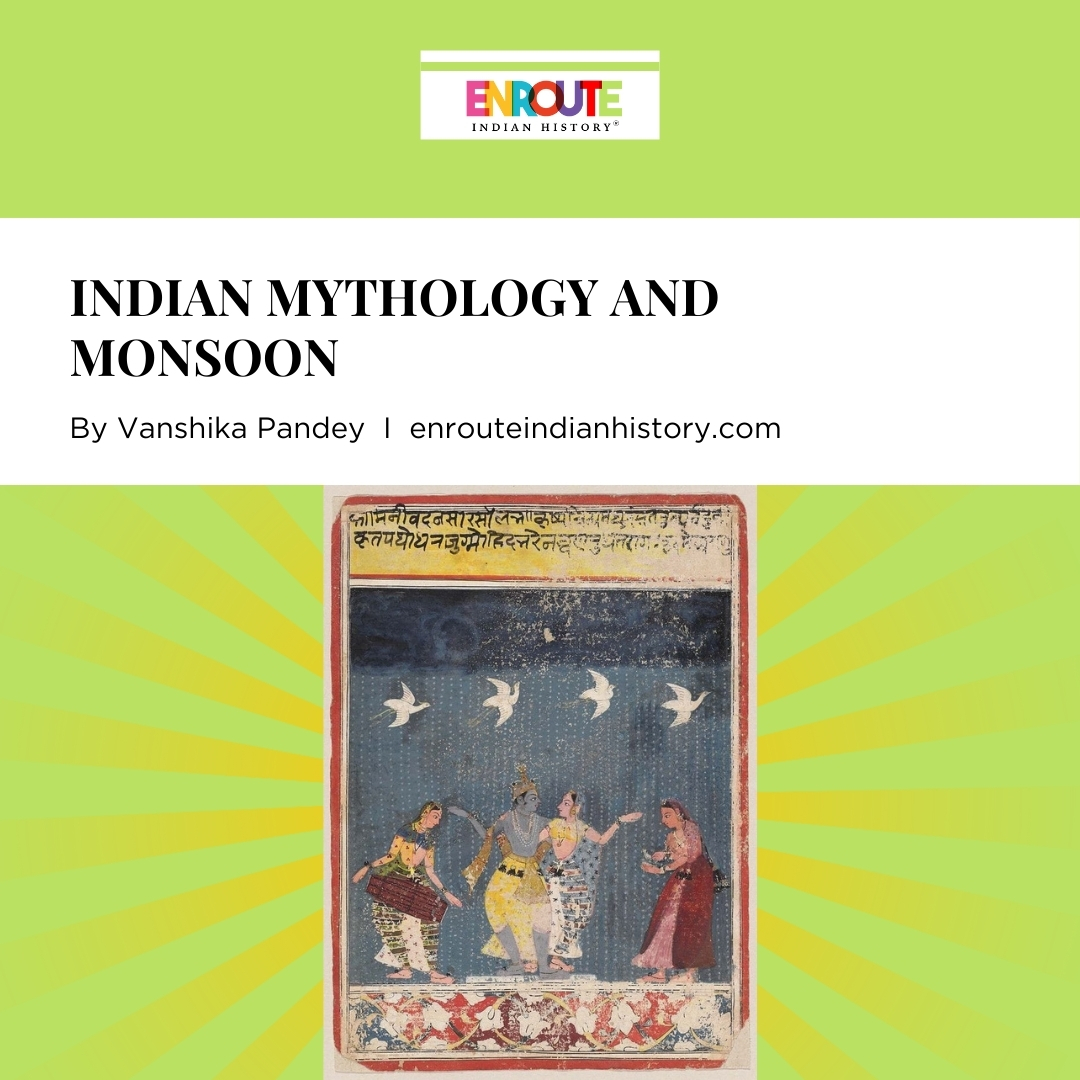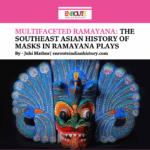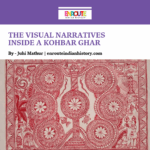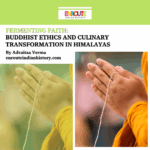
The Indian monsoon, a complex and life-sustaining weather system, holds profound significance for the Indian subcontinent. This seasonal wind pattern, which brings rainfall from June to September, is not only a crucial driver of the nation’s agriculture but also deeply embedded in its cultural and spiritual fabric. Agriculturally, the monsoon is the lifeblood of India. With nearly half of the country’s population dependent on farming, timely and adequate monsoon rains are essential for crop cultivation, particularly for staples like rice, wheat, and pulses. These rains replenish groundwater levels, fill reservoirs, and sustain rivers, ensuring water availability for both irrigation and daily consumption. A good monsoon thus translates to bountiful harvests, economic stability, and food security, while a deficient monsoon can lead to droughts, crop failures, and severe economic distress.Beyond its economic importance, the monsoon is deeply intertwined with Indian mythology and spirituality. It is personified in various deities and legends, reflecting the reverence with which ancient Indians viewed this natural phenomenon. For instance, the god Indra, known as the king of gods and the lord of rain, is a central figure in Vedic mythology. Indra’s battles against drought-demon Vritra to release the rains symbolize the triumph of life-giving forces over desiccation and death.

Source- Philadelphia Museum of Art
Caption- “The Enticement of Rishyashringa c. 1635-1640” one of the first landmarks in Malwa painting.
The monsoon is also celebrated in numerous festivals and rituals. The festival of Teej, for example, is dedicated to the goddess Parvati and her reunion with Lord Shiva, coinciding with the arrival of monsoon rains. This festival involves rituals and songs that express gratitude for the rains and their promise of fertility and prosperity. Naag Panchami, a significant Hindu festival, is also celebrated during the monsoon season, typically in the month of Shravan (July-August), underscoring the intertwined relationship between the monsoon’s life-giving rains and the reverence for natural elements, reflecting the deep-rooted connection between Indian mythology and the rhythms of nature.
In literature and arts, the monsoon is a recurring motif symbolizing romance, longing, and renewal. Classical Indian poetry, like the works of Kalidasa, often depicts the monsoon as a time of love and rejuvenation. The season’s lush landscapes and dramatic skies have inspired countless artists, poets, and musicians, making the monsoon a symbol of creativity and emotional expression.
There is a popular folklore regarding Chatak bird (cuckoo) and its relation with Monsoon. It goes as follows: An old woman and her lazy daughter lived in a village, providing milk to the villagers. Every day, the old woman took their buffalo to graze and drink water from a pond. One day, the old woman fell ill and asked her daughter to take the buffalo out, giving her sweets for the journey.
Instead of allowing the buffalo to graze, the daughter tied it to a tree and sat in the shade eating sweets. The thirsty buffalo waited, but the girl took it home without grazing. When asked by her mother, the daughter lied, saying the buffalo had eaten and drunk water. Angered, the buffalo cursed the girl to be reborn as a Chatak, only able to drink rainwater and not be able to consume water from any waterbodies on the Earth. Thus, this bird can drink only the water that falls from the sky.
There is another interesting episode from the Baal Kaand of Ramayana, There was a sage called Rishyasringa. Rishyasringa’s father was Vibhandak Rishi, and his mother was the celestial Urvashi. Urvashi, sent by Indra to seduce Vibhandak and disrupt his penance. Soon after giving birth to the child, Urvashi goes back to the heavens, her job is done and she leaves their infant son behind. This caused Vibhandak to develop a deep hatred for women, raising Rishyasringa in isolation in a forest. As a result, Rishyasringa was unaware of the existence of women.
On the other hand, Sānta, the daughter of Dasharatha and Kausalya, was adopted by King Romapada of Angadesh and her aunt Vershini, Kausalya’s elder sister, who had no children. One day, while Romapada was talking with Sānta, a Brahmin, who was also a devotee of Indra, seeking help with monsoon cultivation approached him. Ignored by the king, the Brahmin left in anger, causing Indra, the rain god, to withhold rain in support of his devotee.
Faced with drought and famine, Romapada learned that only Rishyasringa, a chaste Brahmin, could bring rain and only Rishyasringa’s name came to his mind. Despite fearing Rishyasringa’s powerful father, the king sent young women, and eventually Sānta, to introduce and integrate him into the society. Rishyasringa performed the needed ceremonies, resulting in abundant rains and eventually marrying Sānta. The story highlights Rishyasringa’s awakening to the existence of women.
Patanjali, the sage revered for compiling the Yoga Sutras, holds a significant place in regional legends tied to the monsoon in India. According to some narratives, Patanjali is considered an incarnation of Adishesha, the divine serpent upon whom Lord Vishnu reclines in cosmic sleep. This association links Patanjali’s spiritual influence with the natural rhythms of the monsoon season.
In Hindu Mythology, the monsoon months, known as Chaturmas, are believed to coincide with Lord Vishnu’s resting period. It is during this time that the earth receives essential rainfall, vital for agriculture and sustaining life. The mythological belief suggests that the blessings of Patanjali, embodying the serpentine power of Adishesha, play a role in invoking and regulating this rainfall. This connection underscores the spiritual significance attributed to natural phenomena in Indian culture, where the cosmic and earthly realms intertwine. Thus, Patanjali’s association with the monsoon highlights the reverence for both the cosmic order and the earthly nourishment essential for life’s continuity and abundance.
Satyabhama, known for her strong will and assertive nature, occupies a prominent place among Lord Krishna’s wives in Hindu mythology. In the tale where she challenges Krishna over managing the rains, her character is portrayed as bold and confident. In Hindu tradition, Indra, the god of rain, holds sway over the monsoon season, crucial for agricultural prosperity and life’s sustenance. In the narrative, she asserts that she can control the rains as effectively as Indra. To demonstrate her prowess, she performs a special ritual aimed at invoking the monsoon rains. Krishna, intrigued and supportive of her determination, stands by her side during the ritual. The outcome of Satyabhama’s challenge is pivotal. As a testament to her devotion and strength of character, the skies open up, and rain pours down upon the earth. This event not only showcases Satyabhama’s confidence and determination but also underscores the theme of divine intervention and approval in response to sincere devotion in Hindu Mythology.
The story of Satyabhama challenging Krishna and successfully invoking the rains highlights the cultural significance of the monsoon in India. It resonates with themes of faith, competition, and the deep-rooted connection between mythology and the natural world in Indian tradition. Moreover, the narrative enriches the understanding of Satyabhama as a dynamic and assertive figure within Krishna’s consort, showcasing her individuality and strength alongside her divine consort.
Through stories like Satyabhama’s, Patanjali’s, Rishyasringa’s, and Chatak’s, the monsoon becomes not only a seasonal phenomenon but also a symbol of spiritual power and the intricate relationship between humans, gods, and nature in Indian Culture. Thus, the Indian monsoon is far more than a meteorological event; it is a cultural cornerstone that shapes the lives, livelihoods, and spiritual practices of millions and is truly the soul of the nation.



















